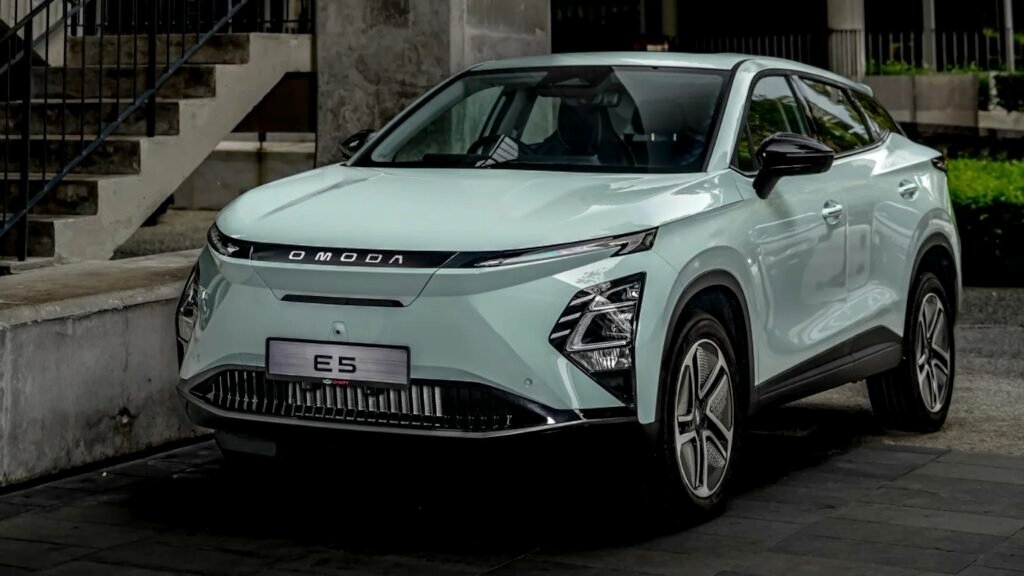As we move into 2025, Chinese automakers continue to lead the global automotive revolution—dominating in electric vehicles (EVs), smart technology, and design innovation. With massive investments in battery R&D, autonomous driving, and sustainable manufacturing, China is no longer just a car producer but a trendsetter. From luxury sedans with semi-solid-state batteries to affordable EVs for urban living, here are the top 10 best Chinese cars of 2025 that define the future of mobility.
1. BYD Seal U – Next-Gen Electric SUV with 800V Architecture

The BYD Seal U (known as Song L EV in China) is a premium electric SUV built on BYD’s e-Platform 3.0 Evo. It features an 800V ultra-fast charging system (10–80% in 20 mins), up to 610 km of range (CLTC), and advanced DiPilot 3.0 autonomous driving. With adaptive air suspension and Blade Battery 2.0, it sets a new benchmark for Chinese EVs.
2. NIO ET9 – Flagship Executive Sedan with Autonomous Ambitions

The NIO ET9 is a full-size executive sedan targeting Mercedes S-Class and BMW 7 Series buyers. With dual-lidar sensors, autonomous driving readiness, rear-wheel steering, and a 150 kWh semi-solid-state battery (1,000 km range), it showcases China’s leap into premium autonomous mobility.
3. XPeng X9 – Smart Electric MPV for Families

The XPeng X9 is China’s answer to the Tesla Cybertruck-inspired MPV segment. With 800V fast charging, XPILOT 5.0 full-autonomous driving, and a lounge-like interior with captain seats and a fold-out table, it redefines family and executive transport with AI intelligence and long-range capability.
4. Zeekr 009 GT – Luxury Electric Coupe with 0-100 km/h in 3.9s

From Geely’s premium EV brand, the Zeekr 009 GT combines luxury with supercar-level performance. With up to 800 hp, dual-motor AWD, and a 140 kWh battery offering 800 km of range, it’s one of the most powerful electric coupes from China—blending style, speed, and sophistication.
5. Li L6 – Compact Smart Family EV from Li Auto

The Li L6 is a smaller sibling to the Li L9, designed for urban families. As an extended-range electric vehicle (EREV), it offers 1,300 km total range, a futuristic interior with triple screens, and Li Auto’s renowned comfort and quiet ride—making it ideal for city and highway use.
6. Hongqi E-HS9 – Chinese Presidential Luxury EV SUV

The Hongqi E-HS9 is China’s flagship luxury EV SUV, once used to transport officials. With up to 510 km of range, four-zone climate control, reclining rear seats, and Level 3 driving assist, it competes with the Mercedes EQS SUV and BMW iX—offering unparalleled comfort and prestige.
7. Chery Tiggo 9 – Flagship SUV with CDC Suspension

The Chery Tiggo 9 is Chery’s largest and most advanced SUV, featuring a 2.0L turbo engine, CDC (Continuous Damping Control) suspension, and a 24-speaker Sony audio system. With three rows, ADAS 2.0, and a 7-year warranty in GCC markets, it’s built for luxury and long-distance comfort.
8. Omoda E5 – Affordable Electric SUV Going Global

The Omoda E5, Chery’s first global electric SUV, offers up to 420 km of range (CLTC), fast charging, and a minimalist digital cockpit. With competitive pricing and strong safety ratings, it’s expanding into the Middle East, South Africa, and Southeast Asia as a value-packed EV option.
9. Geely Galaxy E8 – Premium EV Sedan with Huawei HarmonyOS

The Geely Galaxy E8 is a sleek electric sedan powered by Huawei’s HarmonyOS 4, featuring a 4K OLED dashboard, voice-controlled AI agent, and 700 km range (CLTC). With rear-wheel steering and a 20-speaker audio system, it’s a tech-forward sedan for digital-first drivers.
10. Wuling Binguo Plus – Budget EV with 510 km Range

The Wuling Binguo Plus is an affordable EV with up to 510 km of range (CLTC), fast charging, and a modern interior. Priced under $15,000 in China, it’s perfect for city commuters and first-time EV buyers—proving that high range and quality don’t have to come at a premium.
Frequently Asked Questions (FAQs)
Q1: Are Chinese cars in 2025 more advanced than Western EVs?
A: In many areas—like battery safety (BYD Blade Battery 2.0), charging speed (800V systems), and AI integration (XPeng, Huawei-powered cabins)—Chinese EVs lead the world. While Tesla and German brands excel in software ecosystems, Chinese cars often offer more features at lower prices.
Q2: Will Chinese cars enter the U.S. market by 2025?
A: Unlikely under Chinese brands due to political and trade barriers. However, Chinese-developed vehicles under global brands (e.g., Polestar, Lotus, Smart) will continue to enter the U.S., bringing Chinese innovation indirectly.
Q3: Are these cars available outside China?
A: Yes. BYD, NIO, XPeng, Geely, Chery, and GAC Motor are expanding into the UAE, Europe, Southeast Asia, Australia, and South Africa—with growing service and charging networks.
Conclusion
In 2025, Chinese cars are at the forefront of automotive innovation, combining electric efficiency, AI intelligence, and bold design to redefine what modern vehicles can be. From the luxurious NIO ET9 to the ultra-affordable Wuling Binguo Plus, these 10 models represent the best of Chinese engineering, value, and vision. As the world moves toward smarter, greener transport, China is not just keeping up—it’s leading the way.

